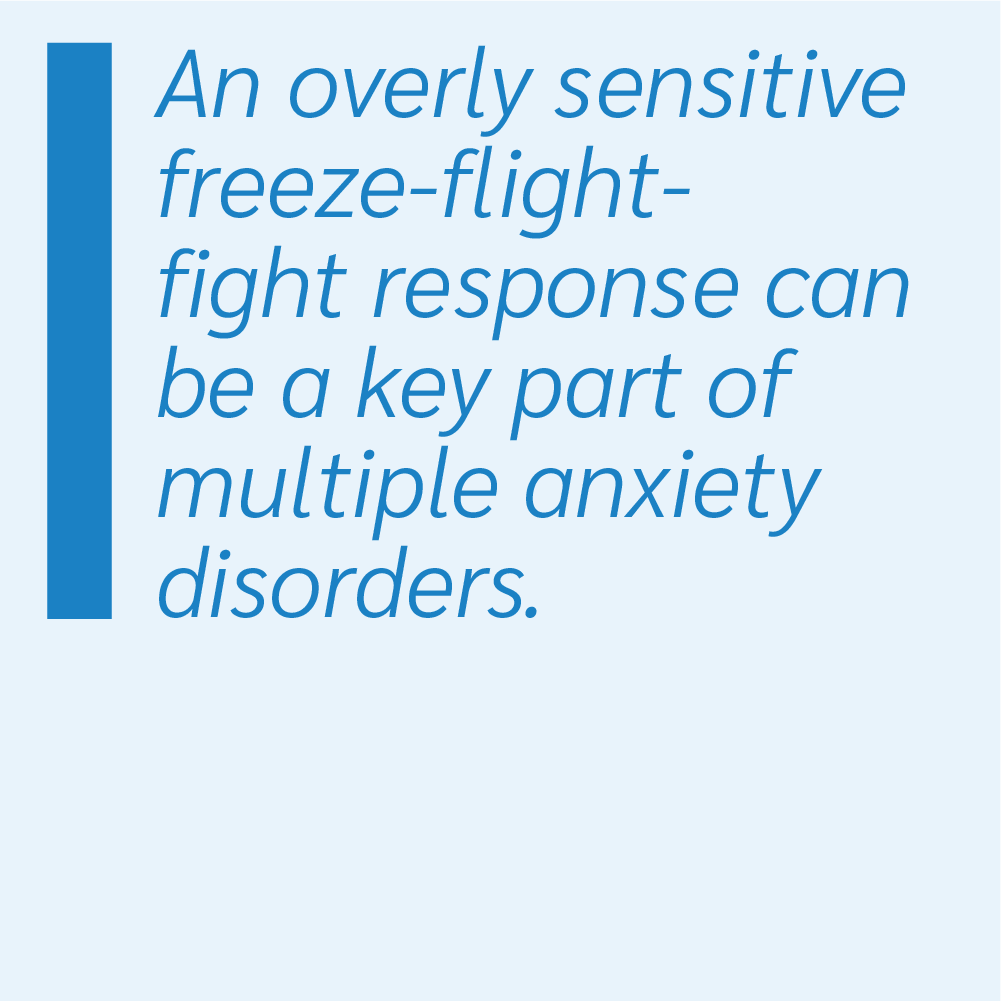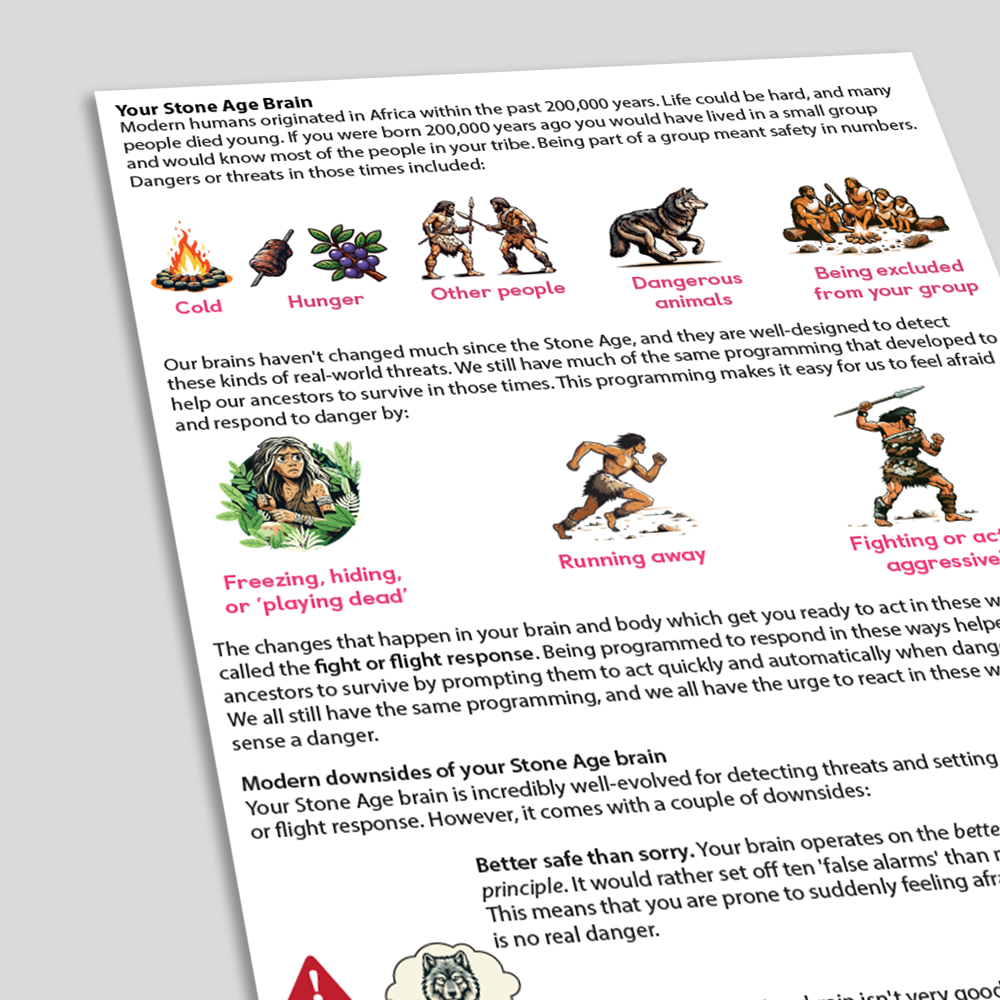Your Stone Age Brain
Download or send
Tags
Languages this resource is available in
Problems this resource might be used to address
Techniques associated with this resource
Mechanisms associated with this resource
Introduction & Theoretical Background
The freeze-flight-fight response is a set of evolutionary adaptations that increase the chances of survival in threatening situations. Consciously or unconsciously appraising an event as dangerous triggers an automatic defense cascade of physiological and cognitive responses that prepare the individual to freeze, flee, or fight (Bracha et al, 2004; Kozlowska et al, 2015). These responses are present in many other species (Canon, 1929), and the ‘hardware’ underlying them in modern humans is thought to be unchanged in the last 200,000 years (Nitecki & Nitecki, 1994). Psychologists often use the ‘Caveman metaphor’ to illustrate how ingrained these responses are.
Freeze-flight-fight responses are associated with activity in the autonomic nervous system (ANS). Fight and flight are supported by increased activity in the sympathetic branch of the ANS, which increases heart rate, blood pressure, respiration, and muscle tone, and inhibits digestive function. Freezing is associated with activity in both the sympathetic
Therapist Guidance
Did you know that what we feel anxious about, and the way we feel anxious in our bodies and minds, has to do with our Stone Age ancestors? Would you be willing to explore this with me?
Review the types of situations that our ancestors found threatening. These include physiological threats (e.g. cold, hunger, thirst), physical threats (e.g. attack, capture), and social threats (e.g. threat to social rank, exclusion from the group). After reviewing them, consider asking:
- What would have happened to Stone Age people that didn’t notice these kinds of dangers?
- Are you ever bothered by any of the same threats?
- What kinds of body / physical / social threats bother you?
- Do you ever feel concerned about any of these things?
- What do you feel in your body when you encounter threats?
- Can you tell me about a time when you thought you were in danger? What
References And Further Reading
- Andrews, G., Creamer, M., Crino, R., Page, A., Hunt, C., & Lampe, L. (2003). The treatment of anxiety disorders: Clinician guides and patient manuals. Cambridge University Press.
- Bracha, S., Williams, A. E., & Bracha, A. S. (2004). Does” fight or flight” need updating?. Psychosomatics, 45(5), 448-449.
- Cannon, W.B. (1929). Bodily Changes in Pain, Hunger, Fear and Rage: An Account of Recent Research Into the Function of Emotional Excitement. New York: Appleton-Century-Crofts.
- Clark, D. M. (1986). A cognitive approach to panic. Behaviour Research and Therapy, 24(4), 461-470.
- Kozlowska, K., Walker, P., McLean, L., & Carrive, P. (2015). Fear and the Defense Cascade. Harvard Review of Psychiatry, 23(4), 263–287.
- Nitecki, M. H., Nitecki, D. V. (1994). Origins of anatomically modern humans. New York: Plenum Press.
- Roelofs, K. (2017). Freeze for action: neurobiological mechanisms in animal and human freezing. Philosophical Transactions of the Royal Society B: Biological Sciences, 372(1718), 20160206.




